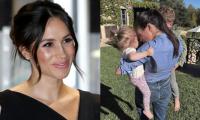The ArtCiti gallery is hosting an art exhibition featuring works by selected fresh fine arts graduates from SABSU, the Shaheed Allah Buksh Soomro University of Art, Design & Heritages in Jamshoro. Titled ‘Pehchan’, the show will run at the gallery until November 16.
“From the very beginning, ArtCiti has believed in giving emerging artists a platform to display their work and thus assist them in creating a space for themselves in the art world,” reads the catalogue released by the gallery for the art show.
“Entering this industry can be challenging and requires immense hard work and determination. ArtCiti encourages young artists to be authentic, determined and to seek validation internally because it’s impossible to please everyone.”
After several meetings, the selection committee at ArtCiti chose 29 artists who have freshly graduated from SABSU for the ‘Pehchan’ exhibition, which is giving these young talented artists the opportunity to put their best foot forward, as they have not been limited to a particular theme or medium.
“We have encouraged them to bring their best work to the table regardless of what style of artwork they choose to produce. In this exhibition the audience will find watercolour on paper, miniature work, oil on canvas and more.”
Ali Murtaza, one of the fresh graduates, says in his artist statement that in conversation with the viewer’s conscious, subconscious and unconscious self, he aims to evoke what pre-exists within. “My visuals allow the viewer to reimagine the phenomenon of identity or identities and question their presence, absence and parallel existence, all at once.”
Anushah Khowaja, another of the graduates, says the purpose of her work is to change the meaning of the wordplay. “It’s interesting how the meaning of the wordplay can change with age and thinking. For me the technique opens up new avenues of experiment and exploration; viewers can reminisce about their childhood when looking at these prints.”
Aysha Khan says her work explores the relationship between Kafkaesque society and human social tension. “The canvases communicate powerful emotions of human struggle for existence in a society. Paintings depict individuals who are often forced into claustrophobic spaces with distressed manners, revealing the feeling of senselessness, melancholy and apprehension.”
Bilal Rajput says chameleon is an object in his art referring to the science of behaviour changes. “Camouflage is not only limited to chameleons but applies to human beings as well. This is how humans transform themselves according to the need of the environment.”
Faisal Nawaz says that as a son of an author, his relationship with books is very deep. “With technology improving every day, people are using different ways of accessing education and knowledge.”
He says books are slowly being replaced by the digital medium, and are slowly disappearing and breaking free from daily usage. “My work shows the slow decline of the culture of reading actual books.”
Fatima Memon says her work shows the fusion of old culture with new culture or vice versa. “There is hardly any culture which is altogether new. This further explores my idea that old and new cultures are linked to each other, and the future of this is a mixed culture, rather than new culture.”
Fatima Sheikh says the idea of her work focuses on the relationship of resonance between the subject and an object. “I have always been intrigued by the bridge between childhood and adulthood.”
She says that to represent what we hold onto, let go of or where our minds wander between the two pathways is depicted in her work through symbolism. “The incompleteness in my work is an attempt to allow ourselves to connect and feel closer with one another in this fast-paced journey we are in.”
She asks when an artwork is really finished. “Does it have to be complete in order to be finished? As we reach our adulthood, we’re never content, always wanting more.”
Fiza Fatima says contentment art is the power to elicit a deep emotional response. “I portray happy moments in my artwork so that children can indulge in more positivity and happiness.”
She believes that most children are happier and more content than adults anyway. “I also added my signature flat brushstrokes and oil paint splatters to make the work unique. I love to include vibrant colours to my work, as it lights up my soul.”
Ghulam Sakeena says that the aesthetic of her artworks is derived from a combination of line, colour and geometric patterns expressing the concept of beauty in her view. “I also emphasise the clarity of the composition and technical skills, and I also maximise colour possibilities.”
Hamna Akram says her work, in a way, is an attempt to bring focus back to community. “Scientific and industrial revolution have had a huge impact on our world. Humans have gone from their natural state of being social animals to being free-standing individuals.”
Hamza Ghafoor says that amalgamation is the phenomenon of combining. “This amalgamation is about the blended cultural identities of the diversity in cultures of Pakistan. Through personal experiences and exposure to different cultures, I have attempted to make the beholders’ experience a fused image of diversity.”
Itrat Ul Zahra says society tends to undervalue most ordinary individuals who actually work hard. “People who we generally find uninteresting have been presented in my work in a pleasing way to make people reflect on their importance.”
Junaid Ali says insecurity is a major sign in our society. “We all have some insecurities at some point in our lives, and I’ve portrayed different types of insecurities with different types of objects.”
Laiba Iqbal says persona is a kind of a mask designed to conceal the veritable nature of an individual. “I decided to paint myself in a theatre character because theatre artists aren’t in their causative form while performing.”
Madiha Rajper says she uses monochromatic paintings of miniatures that shows how we have left history behind, but it still reflects in her work through her technique. “Behind the bars of contemporary art I’ve tried to display how the history of traditional Mughal miniature was left.”
Mahnoor Khaskheli says her work reflects the folktale of a powerful king named Umer and a Thari girl called Marvi. “Umer wanted to marry Marvi, but since she refused, she was imprisoned by him.”
Mahnur Iqbal says that in life, things do not always end up as we want them to. “Sometimes one predicts a certain outcome and it doesn’t happen. In my work, dice is used as a metaphor to represent that unpredictable events may or may not happen in life.”
Mashhood Ali Talpur says that there are many different thought processes and feelings that go though one’s mind that cannot be explained in normal conversation. “Questions that come into our minds but are unanswerable, as these thoughts dive deep into an infinity loop and are difficult to explain.”
He says that one person cannot comprehend what thoughts exist in another individual’s deepest level of perception. “I have shown this state of mind in a visual form in my installation art through continuity of reflection. I hope the viewer will discover what I’m referring to.”
Midhat Zehra says that an obscurantist deadlock has been created that is being aggravated by the ability of major religious countries in dealing with major issues confronting extremism.
Muhammad Huzefa says that there are many perspectives about sculpture work. “There are so many famous sculpture artists I look up to, such as Michelangelo and Marcel Duchamp. I have tried to include in my work what I’ve learnt from their work.”
Muhammad Qasim says that the word ‘Kaash’ is connected with every human being. “Every human has their own desires which remain unfulfilled, which have been living inside him since childhood.”
Saman Qureshi says her work is for the awareness of kyrofelonoshophobia, which is a fear of cartoons and soft toys. “It’s one of the most rare phobias. People adore cartoons or toys and force others to like them in the same way because they are cute to them. But for kyrofelonoshophobics, cute is actually creepy.”
Tarique Ali Mahar says his artwork is like capturing memories belonging to his village, his childhood and his surroundings. “The act of capturing is actually hidden with industrialised materials like cement. This subject matter deals with the present condition of our social status.”
Tayyaba Sabir says gender stereotypes activate societal expectations surrounding physical appearance, personality type, attitude, interests and social relations, and motivates to try and conform to traditional gender roles.
“The overall mindset of stereotypical roles in a society reinforces gender discrimination. The body of my work focuses on the grey patches on skin to symbolise the stereotypical mentality and how it impacts significance on gender inequality.”
Ushna Shaikh says that from the beginning, the Mughal style established a prominent feature of a realistic portraiture with a traditional look, demonstrating their cultural inheritance or legacy. “In my thesis I attempt to show what would happen if the Mughals adopted today’s culture.”
Uzair Ali Abro says humans use animals in order to defame one another, and as time is passing by it is becoming normal. “Humans are a symbol of peace and animals are a symbol of aggression. But in reality, they are totally the opposite.”
Vaniza says that in her work she has tried to visualise her deepest thoughts, hidden emotions and strongest feelings through gestures. “Gestures are symbolic actions that convey specific messages. The images I create are coined from personal experiences, fears and interest.”
Younis Raza says his work reflects the desert life. “It focuses on the droughts of the Thar Desert, shows hunger, thirst for water and agony of life and death, along with the extremes of heat. In pictures Thar may look beautiful, but in reality it’s the opposite.”
He says drought seems like a common word used lightly, but in reality many people lose their lives due to no water and extreme heat. “I have chosen to use wood and metal in my work to represent the reality of Thar.”
Yusra Memon says her work is all about the personal spaces that relate to a person’s feelings. “Here space is everything to me; memory, what a strange thing it is!”
She says that the spaces of our moments of solitude, the spaces in which we have suffered from solitude, enjoyed and compromised, remain indelible within us. “Because these spaces have the ability make a person feel suffocated and uncomfortable.”
The front facade of the Sindh High Court building in Karachi. — AFP/FileThe Sindh High Court has stayed the 50 per...
A representational image showing a person holding a hand grenade. — Reuters/File Unidentified suspects on Saturday...
Police personnel stand guard on a street in Karachi. — AFP/FileDuring a police raid by the Malir task force on a...
A SFA inspector with a restaurant staff.— SFA website/file The Sindh Food Authority has intensified its efforts to...
Screengrab from a reel showing singers rehearsing ahead of the Youth Circle of Synapse's music concert to create...
Visitors inspect the armour ammunition display kept in a showcase during the International Defence Exhibition and...







